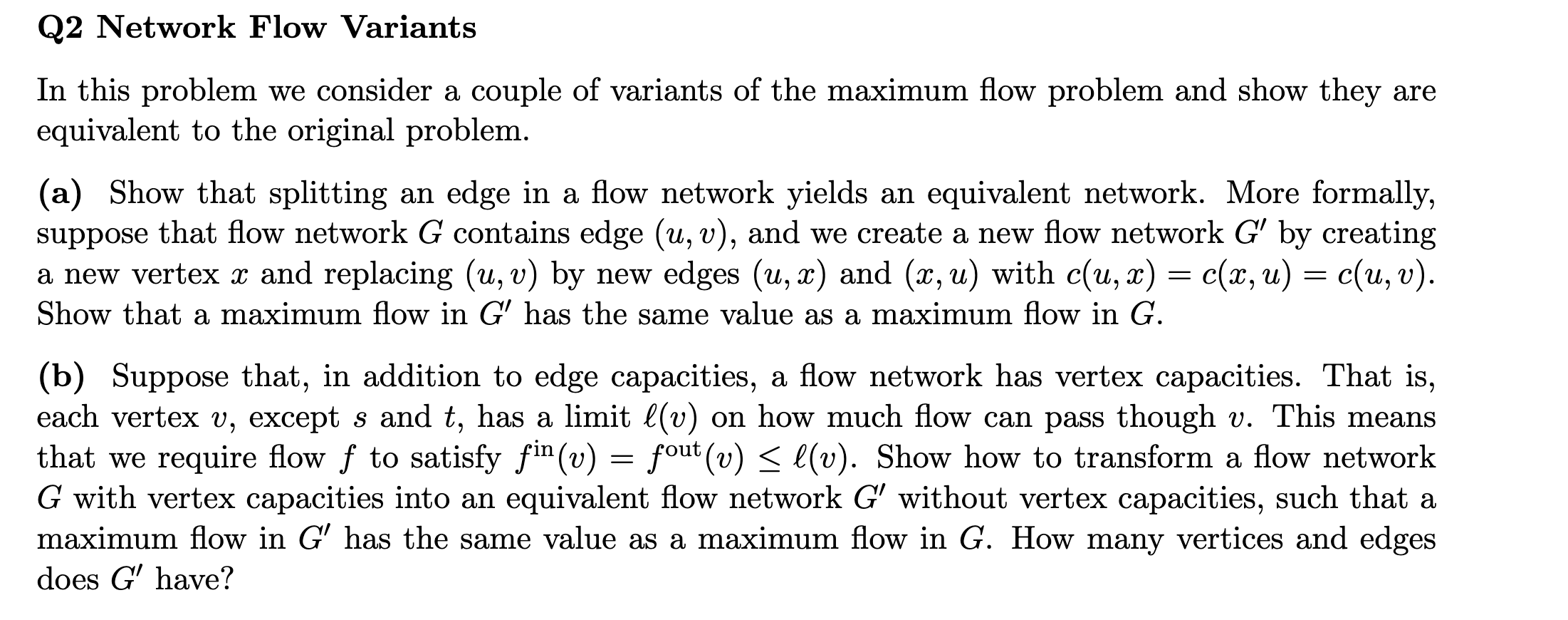
part (a)
If the original flow sends f(u,v)=c, keep every other edge the same and route that exact amount through the new vertex by setting f(u,x)=f(x,v)=c. Any feasible flow in G maps to a feasible one in G' with the same value, and vice versa, so the maximum-flow value is unchanged.
part (b)
Replace every vertex by two nodes and , add a single bridge edge with capacity , send all original incoming edges into , and all original outgoing edges out of (keeping their original capacities). This enforces the vertex limit without explicitly storing it. If the original graph has vertices and edges, ends up with vertices and edges.